Week 11: Practical Research – Construction, Budgets and the Small Details.
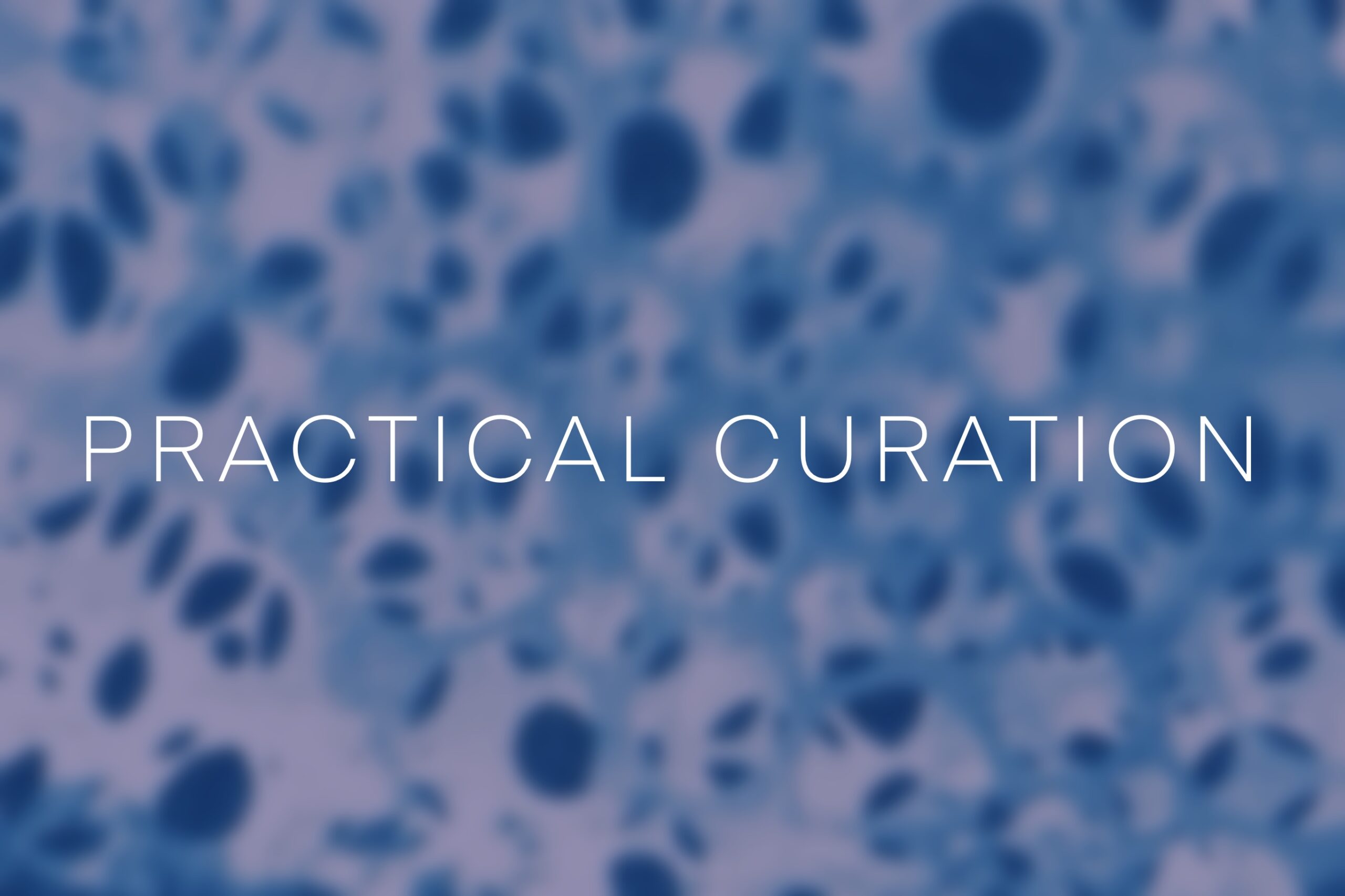
Introduction
Having realised how the micro-exhibition Mycorrhizal could be displayed overall, I am now able to make decisions for how the pieces should be displayed individually.
Artwork Presentation
All printed/2-dimensional pieces are to be mounted on foam board, then attached to a frame. This will ensure that the pieces remain flat when wall-mounted, without wrinkles or buckling, while the frame will raise the pieces to jut out from the wall slightly. Many of the pieces have light colours towards the edge; mounting and elevating the two-dimensional artwork from the wall will help the viewer differentiate the piece from the wall immediately.
Small sculptural pieces, such as Layla Knox’s Lichen and my piece Monument, will be displayed on small shelves attached to the wall. No invasive wall hanging methods are permitted in the In Vitro gallery. As a result, I will be using a combination of adhesive command strips, silicone wall adhesive dots, and professional double-sided tape. Wooden shelves would be too heavy to be supported with these adhesive methods, so I shall be developing a lightweight but structurally stable set of shelves made of cardboard. Gallery tags will be constructed using printed paper and thick cardstock. Promotional posters, gallery text, and gallery guides would also need to be printed but will not require the same level of construction as the other tasks.
Promotional Graphic Design
I decided to design a promotional poster for Mycorrhizal to understand the work associated with developing promotional material and the application of graphic design branding across levels of the exhibition experience.
I started by deciding on an image for the poster. I selected three images that I have taken personally and therefore have the rights to use. I ultimately decided on the close-up photo of Hollows II, a piece that I created that is included in the micro-exhibition. The piece was initially designed to appear like roots, as mycorrhizal fungus attaches to roots. I believe that this works well as an image for promotional material. Additionally, using an image of an artwork from the exhibition for promotional material is typical in contemporary exhibition promotion, such as the use of Emily Beaney’s Deviant (2023) in the promotion of Talbot Rice’s Trading Zone exhibition (2025).
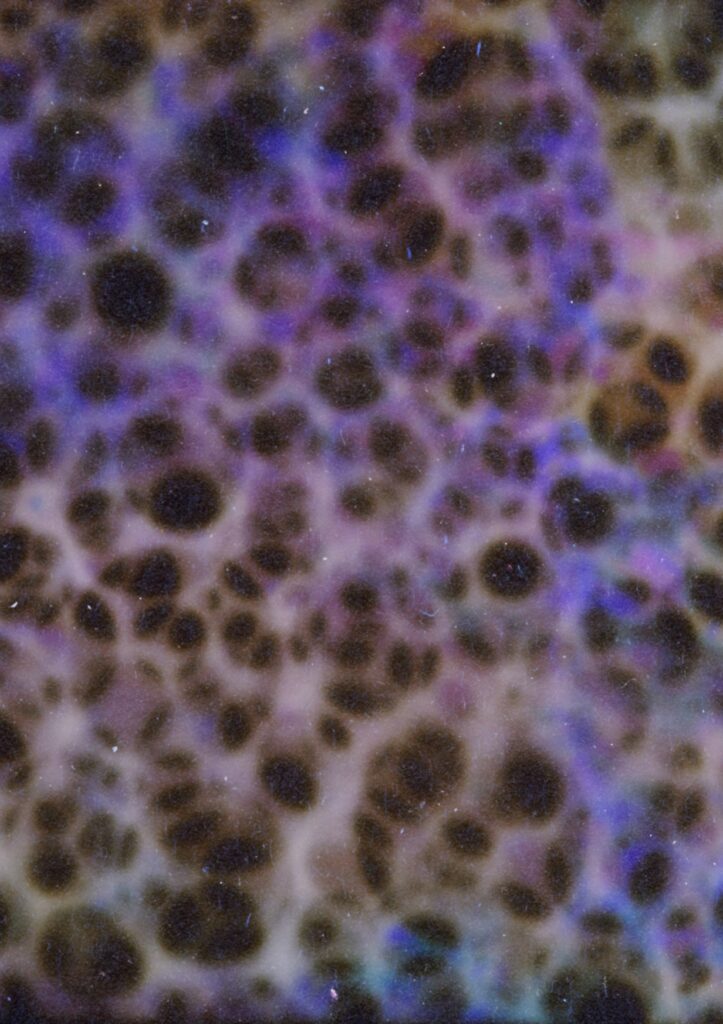
Harry Mayston, Hollows II (2024), Edited Photo on Tracing Paper
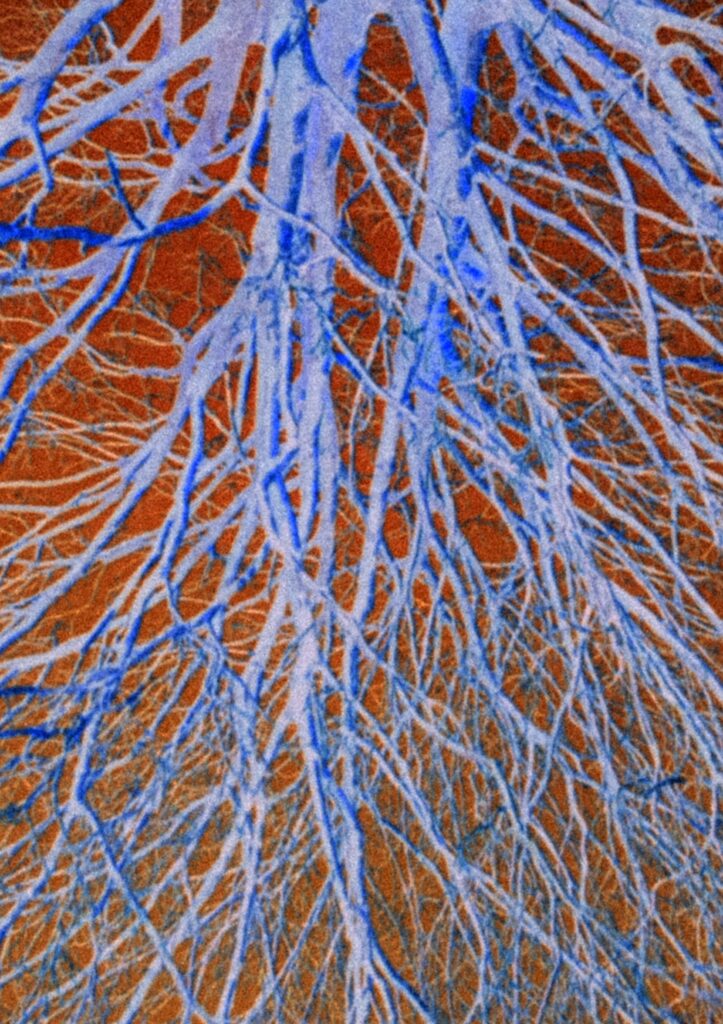
Harry Mayston, Tree Roots (2025), Edited Photo
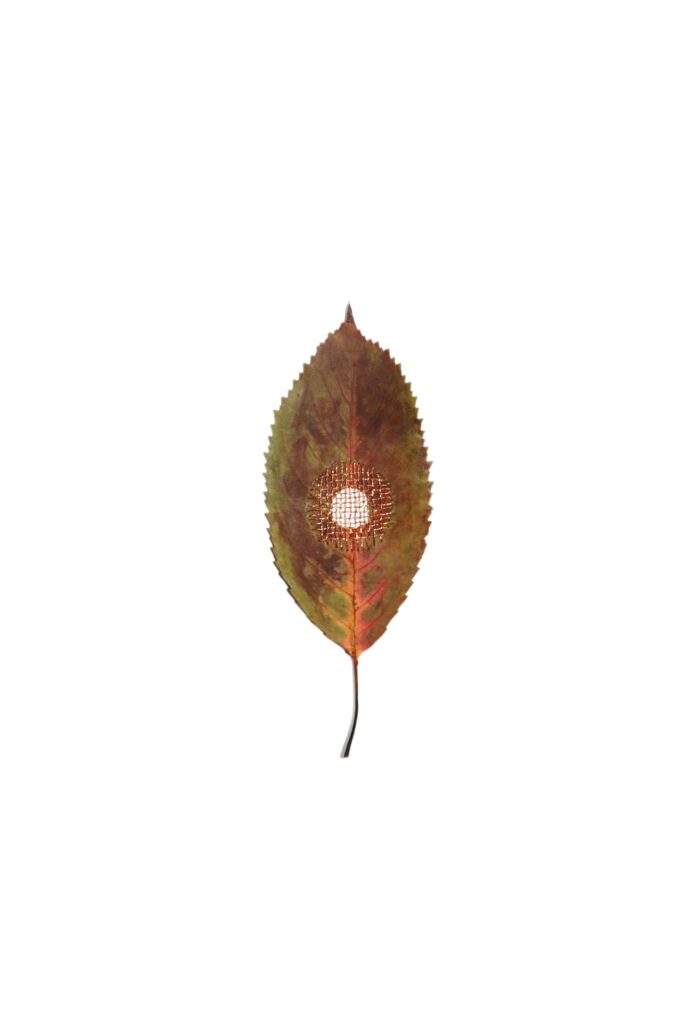
Harry Mayston, Darned (2025), Bronze thread and found leaf, Photographed by Harry Mayston (06.04.25)
Following graphic design conventions, I chose a restricted font set, using Hiragino Mincho ProN W6 and Eina 01 Regular. These were chosen for their legibility and aesthetic qualities. I applied blur effects to both the title and the tagline to differentiate the text that refers to the exhibition context from the text that provides information, such as participating artists and the location time. I also added the Summerhall Arts logo, as this is a precedent that other events that have used this space have included (Summerhall, 2025).
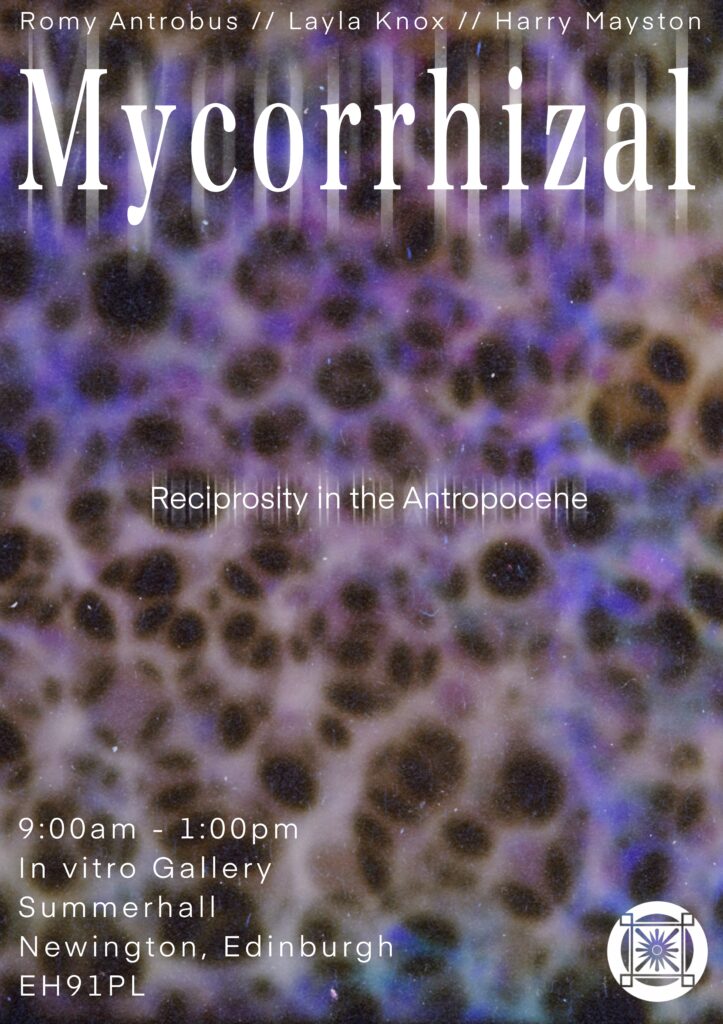
Harry Mayston, Mycorrhizal Exhibition Poster Version 1 (2025)
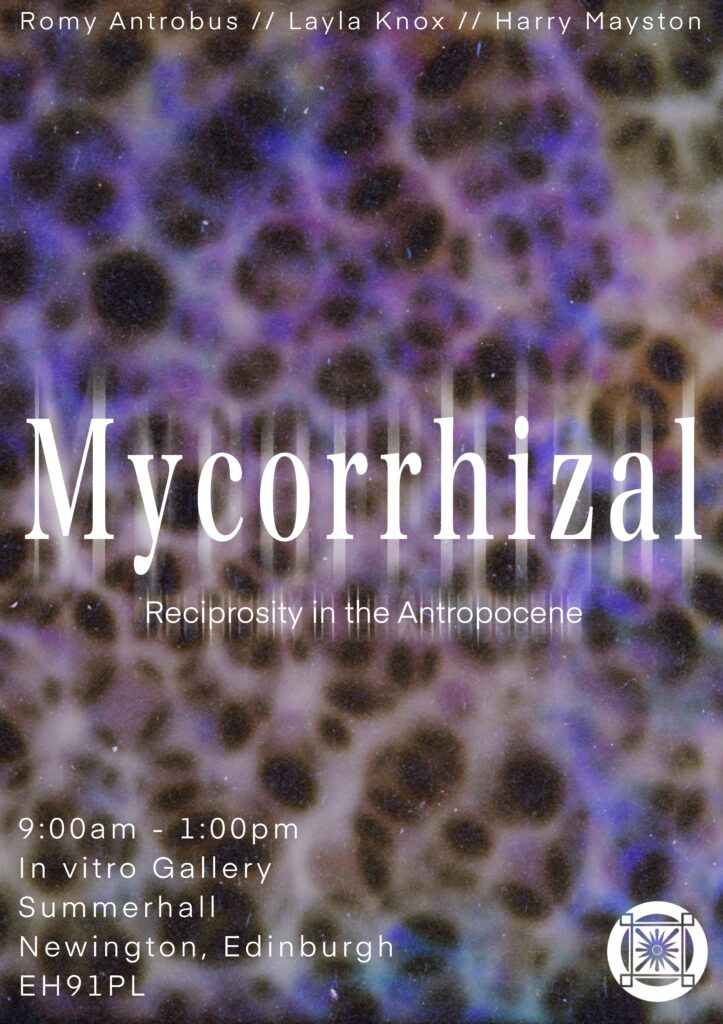
Harry Mayston, Mycorrhizal Exhibition Poster Version 2 (2025)
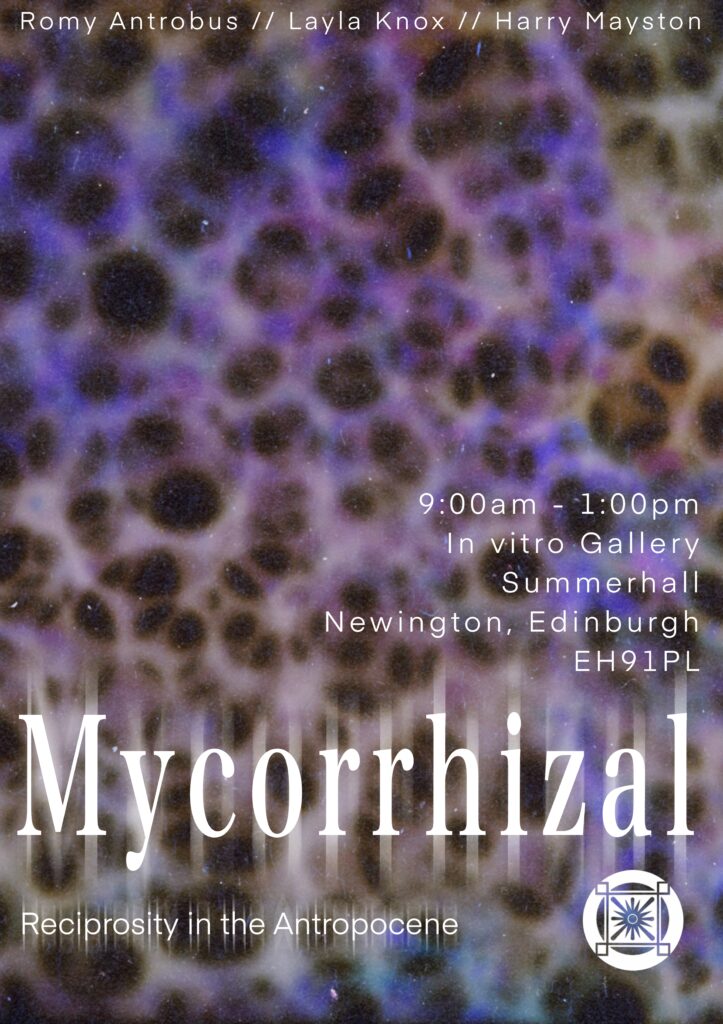
Harry Mayston, Mycorrhizal Exhibition Poster Version 3 (2025)
I have decided to proceed with Version 2
The poster development took 2 hours.
The same font hierarchy can be used on the gallery labels and exhibition handout, with Hiragino Mincho ProN W6 used for titles and Eina 01 used for factual information.
Construction:
Please note: Decisions have been made based off my own personal material investigations and practical research.
Pieces that require printing will be done so using the ECA click and collect printer services onto four sheets of 160 gsm A1 paper:
- Romy Antrobus, Whispered I, (2024)
- Romy Antrobus, Open Field, (2024)
- Romy Antrobus, Stop Me From Plummeting, (2025)
- Romy Antrobus, Untitled, (2025)
- Harry Mayston, Hollows I, (2024)
- Harry Mayston, Hollows II, (2024)
- Harry Mayston, Heirophany, (2025)
- Harry Mayston, Blue Things, (2024)
These are to be mounted on foam board using double-sided tape. The most effective way for attachment is spray adhesive; however, this was too expensive, and I did not have the space to safely use spray solvent glue. Water-based glues, like PVA, were also not used, as they can result in buckling of paper. Double-sided tape is less secure but is easily applicable and does not compromise the display. The frame, used to elevate the mount board from the wall, will use leftover card and foamboard and be attached with a hot glue gun. The above wall pieces will be adhered to the gallery walls using adhesive command strips.
The Piece Monuments (2025) requires multiple shelves. I will construct these using grey 600 gsm card. Using a box cutter, I will cut the sheets of paper into square and triangle shapes, and then with double-sided tape, I will attach white paper to both sides to mimic the white gallery walls. Finally hot glue will be used to assemble the pieces and create a lightweight, stable shelf.
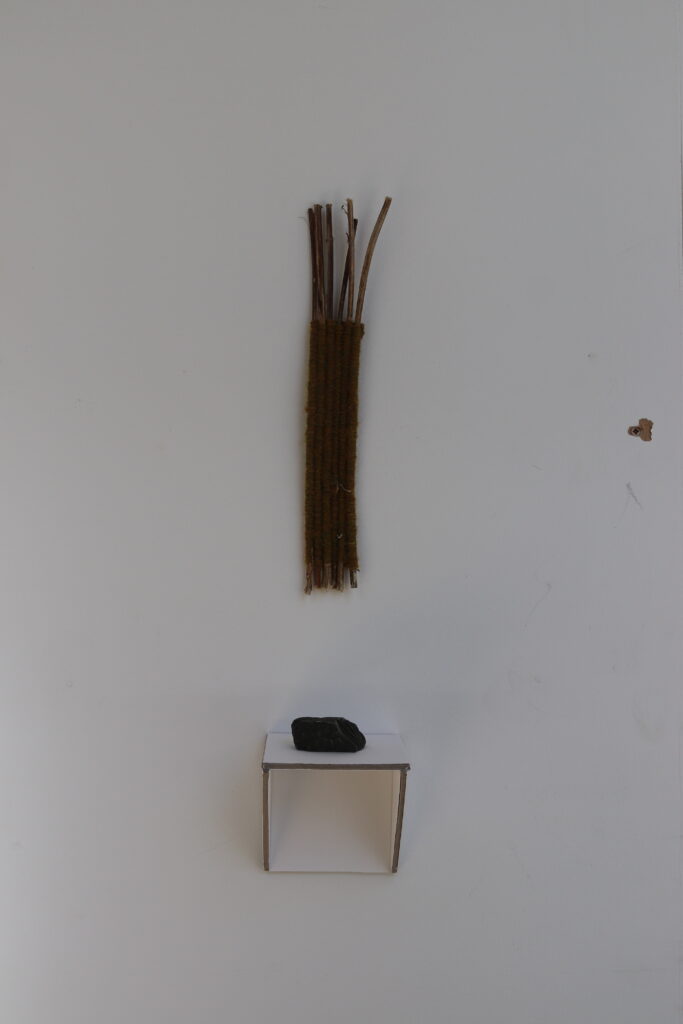
Layla Knox, Nettle Weaving (2025), Found Nettle Stalks and Yarn (Top) and Harry Mayston, Monuments (2025), Found Object , Photographed by Harry Mayston (06.04.25)
Example shelf, attached to wall using silicone glue dots.
I originally experimented with using paint to make the shelves white but it resulted in a messy appearance that I believed would have compromised the simplicity of the artwork. I kept this shelf mounted for 6 hours with various weights applied to the validity of this as a display method. It stayed firmly mounted to the wall.
Budget
Below are listed the costs of materials:
- ECA Printing: £4 per sheet: £16
- Foamboard: £4 Per Board: £16
- Grey Board: £2 per Board: £4
- Box cutter: £2.60
- Hot Glue Gun + Glue Insert: £3
- Silicone glue dot: £3
- Command strips: £5
- Double Sided tape: £2
Total: £51.60
Application to Speculative Project
Making an exhibition poster permitted me to understand the process, skill and time that is required to create promotional materials. I anticipate that if I were to propose hiring a graphic designer, 2 days’ worth of work would be required to fully communicate the requirements of the designed material, complete an exhibition poster, gallery handout information, and gallery labels, costing £433.26, calculated as a graduate artist wage, using Artist Union England as a reference. Though this is an artist wage, rather than a designer fee, I cross-referenced this with Creative Pool magazine, which suggests something similar, as the graphic design work required does not include animation or video work. This will be re-examined when budgeting the event. Ideally the job would be offered to a graduate/early-career designer; however, if costs cannot be accommodated, it will be encompassed under my curatorial role.
The card shelves were an effective method of display for the Mycorrhizal exhibition. In Weird Frictions this could be repeated as a cost-reducing, biodegradable, easily mountable wall attachment that can be applied to the Strange Field walls. Though I was limited with the micro exhibition, the higher budget would allow me to use biodegradable forms of glue, reducing the environmental impact of constructing these shelves. Like the exhibition poster, this is something that I would be able to produce myself.
Bibliography
- Artists Union England (2024). Rates of Pay – Artists’ Union England. [online] Available at: https://www.artistsunionengland.org.uk/rates-of-pay/.[Accessed 13 Apr. 2025].
- Creativepool (2021). How much should I charge as a Freelance Graphic Designer?[online] Creativepool.com. Available at: https://creativepool.com/magazine/workshop/how-much-should-i-charge-as-a-freelance-graphic-designer [Accessed 13 Apr. 2025].
- summerhallarts.co.uk. (2025). Available at: https://www.summerhall.co.uk/visual-arts/out-of-sight-out-of-mind-3/ [Accessed 13 Apr. 2025].
- Talbot Rice (2025). Trading Zone 2025 | Talbot Rice Gallery. [online] Available at: https://www.trg.ed.ac.uk/exhibition/trading-zone-2025.



